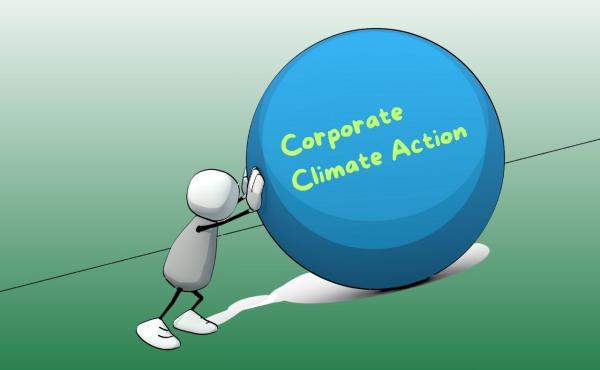
The ECGI blog is kindly supported by

Does sustainable investing work? (Part 3) Reaching orbit?
In the first two articles in this brief series (see article links below) we introduced the three-stage rocket analogy to better understand the degree to which Sustainable Investing (“SI”) practices can have positive real-world impact through investment activity. To recap briefly, just like with a three-stage rocket, most SI practices are intended to trigger a three-stage process, all of which need to be completed for the SI intervention to be considered successful:
- The activity that the investor undertakes must have some effect on the companies (or the managers of those companies) in which they invest, which (at least in principle) can trigger a change in what the company does.
- Managers at the company must indeed respond to that effect and change their actions. This in turn changes what the company does and creates an impact in the real economy that would not have happened without the investor activity.
- The impact in the real economy must persist even after second order impacts and must not be (entirely) unwound by the response of competitors and consumers to the company’s actions.
We also described how – based on a review of relevant academic publications that discuss efficacy of SI practices – we determine which practices can have which effects, and whether there is any evidence of these stage 1 (direct), stage 2 (indirect) and stage 3 (systemic) effects.
In the second article we concluded that investors can achieve some stage 1 effects (such as a change in cost of capital) but in the vast majority of cases the changes are economically insignificant and very unlikely to trigger substantial change in company behavior. Also, we concluded that engagement offers investors the best tool to achieve stage 2 effects, but expectations should be managed as to its likely impact: how great is the contribution that can really be delivered by companies, consistent with the “zone of discretion” directors have, and will this contribution play a meaningful role in achieving stage 3 – systemic – effects? In general the evidence suggests that engagement will be most successful when focused on requests for action that are consistent with long-term value creation at the company and not too costly to achieve. Engagement therefore has inevitable limits when it comes to addressing a profound externality such as the unpriced cost of carbon.
In this third and final article we draw some conclusions as to the stage 3 - system-wide - effects, and discuss what avenues can be pursued by investors who aim to contribute to system change. Does the SI rocket ever reach orbit?
Stage 3 effects?
Our conclusion here is brief and likely disappointing: we are aware of only very limited evidence that SI practices have stage 3 effects – that an investor, by setting in motion a chain of causality starting with a stage 1 (direct effect), can prompt a company to deliver a stage 2 effect (a change in company behavior), that in turn contributes in a meaningful way to a change in systems: the internalizing of an externality, the creation of broadly recognized and adhered to standards, the decrease of emissions in a certain industry, or bringing the achievement of an SDG in closer reach. Why is this?
First, internalizing significant externalities is, by definition, costly for companies even over the long term. Major challenges like climate change are not just an issue of time horizons that will automatically internalize over a long-enough period of time. Instead, addressing externalities is genuinely costly for companies. But as we saw in the second article in this series, the tools available to investors are rather weak, and not up to the task of imposing very costly requirements on companies.
Second, what’s profitable tends to get done. A reduction in production by an oil & gas company generally results in the fossil fuel assets being exploited by another party. A significant increase in one company’s costs is met by a competitive reaction by others. This makes investor action on externalities a bit like squeezing a balloon: the problem is removed in one place only to appear elsewhere. As an example, institutional investment portfolios have decarbonized over the last decade while society’s emissions have continued to rise.
Third, the fiduciary duties, or commercial incentives, of most actors in the investment chain are to focus on financial returns (which are easy to measure and a key determinant of performance evaluation and the awarding of mandates) over environmental or social impact (which are hard to assess and often secondary to financial considerations when push comes to shove).
Fourth, accountability is weak. Disintermediation of the investment chain means that each actor’s incentives are to keep the next actor up the chain happy. In many cases the true sanctions for failing to act on environmental or social issues are weak and the rewards for doing so underwhelming. Information and resource asymmetries are widespread between end clients and their asset managers and between asset managers and investee companies. Clients and stakeholders may be satisfied by the “warm glow” created by apparent action without asking too hard what is really going on, so greenwashing and half-heartedness is widespread.
In the previous article we paraphrased Pedro Matos who in his paper ESG and Responsible Institutional Investing Around the World (2020), asked the question whether “Sustainable Investing is truly helping to achieve societal goals”.[1] Based on our review, and applying the 3-stage rocket analogy, we’d say “generally not”.
We have to admit that it is difficult to prove a negative. The absence of evidence need not be evidence of absence. There is clearly a need for more research seeking to identify systemic impacts of investor engagement, even though it is difficult to do. Areas other than climate change may be more fruitful for SI impact, given how extensively carbon is embedded into our economy; other areas, such as employee diversity or even biodiversity loss might be less costly for companies to pursue and less likely to trigger a competitive response. But, as outlined above, there are sound reasons to believe that if such research is ever conducted, it will find those systemic impacts to be rare and limited.
Where next for sustainable investing?
This analysis is disheartening for those who have pinned their hopes on voluntary action, led by investors, to solve society’s major problems. The most expansive framings of “system-level investing” or “universal owner theory” have proposed that asset owners with a correct reading of their fiduciary duty will automatically solve society’s problems in order to maximize portfolio returns: what’s good for society is good for the economy and good for my portfolio. But this was never a realistic prospect. Universal owner theory, while appealing as a concept, fails, in its full-fat form, to survive contact with reality, for all the reasons outlined above and as discussed extensively by several authors.[2]
But our definition of sustainable investing was not so ambitious. In the first article in this series we defined SI as:
Using investing activity to influence companies and assets so as to generate financial returns while achieving positive outcomes for people and the planet, and avoiding negative ones.
This does not require investors to solve the world’s problems by themselves.
So while the conclusions described above may be disappointing to SI proponents, we believe there’s no reason for despair.
The good news is that based on the academic record we now know, in much finer detail than just several years ago, which tools in our SI toolbox work and which don’t.
Let’s accentuate the positive and zoom in on what works. While the practices described below may not be widely recognized as “SI practices” today, we vehemently hope that the SI community – if at least it genuinely intends to address systemic issues – will adopt them. We don’t claim to be the first or only people to identify these areas of productive focus for sustainable investors. But we hope that by adding our voice to the chorus we can in a small way help provoke the change we believe is necessary.
- “Limitations-aware” Engagement
Engagement emerges from this project, like in all other research projects focusing on SI, as the most effective tool investors have to achieve change in company behavior. However, we have inserted the “limitations-aware” in the caption here to signal that investors should have realistic expectations as to what they can get companies to do. Convince companies to abandon profitable business lines in order to invest in new business lines that do not (yet) meet their hurdle rate, and that may be very distant from their core competences? This will not happen. But focusing on smaller changes that are in a company’s ‘zone of discretion’, and deploying the engagement tools effectively – i.e., looking for collaborative opportunities, learning from the ‘activist investor’ playbook – can be very effective in bringing small contributions. Indeed recent investor success stories would fall into this category of “limitations-aware” engagement: for example, investor action on tailing dam safety in the mining industry.[3] These initiatives focused on asks that were achievable and not too costly, which would not result simply in outsourcing of the problem, and went with the grain of existing company business strategies and long-term value creation. Finally, investors should not forget about their fundamental monitoring responsibility – simply playing their role in the corporate governance and holding corporate management to account.
- Engaging with private markets and blended finance
Investors who want to see systems change should look for opportunities to provide ‘additional’ capital, which is currently not being provided because the returns are too low or the risks perceived as too high. This is because what is holding up much systems change, is that new technologies that require scaling and deployment are often in search of capital but do not yet offer market-rate returns. The academic research in this area is also limited, but what research there is (plus a dose of applied common sense) does suggest that these additional investments can make a contribution to system-level change. The system change can come from nurturing transformative technologies into being; or from reducing the perception of risk through demonstrating that a certain type of project in a developing market can be done profitably; or by bringing together different types of capital, including from concessionary donors, to scale impact.
In our first article we highlighted that private markets are a promising realm for impact, and this is certainly true in relation to additional capital. That’s why we return to them here. In fact, we believe that sustainable investment funds should overwhelmingly reside in the private rather than public markets domain.
In light of fiduciary duty, most institutional investors like pension funds and insurance companies will not be willing to make concessional investments (although recent UK legal guidance suggests that asset owners might want to explore the extent to which limited impact investments may have a role[4]). However here again public (and philanthropic) actors can come to the table: the blended finance[5] toolbox offers financial instruments that can tailor many projects to ensure they do meet institutional investor requirements. However, this will require investors to proactively seek out collaboration with government agencies, development banks or philanthropic foundations. Often structuring these kinds of investments is a question of co-creation and investors should not assume they should lean back and wait for these investments to fall into their laps – they will need to claim a seat at the table. We are seeing some forward-looking investors deploying resources to make this happen, acting as convenors, contributing to multi-stakeholder efforts, or creating products to appeal to investors with dual financial and impact objectives.
- Public policy advocacy
This last tool recognizes that addressing systemic issues will require governments to act. Delving into the academic literature on the efficacy of public policy is beyond the scope of this project, but we feel we’re on fairly safe ground here and this necessity is also increasingly acknowledged in SI circles. This is not to say that the private sector has no role, but to say that the role of the private sector is going to be relatively meaningless without the required public policy interventions. As many of the publications we reviewed point out: private sector or investor action cannot be a substitute to regulation. And only governments can make those regulations, or create taxes, or laws, or provide subsidies. To be fair, public policy advocacy, and the associate area of lobbying alignment, have long been proposed by advocates of “universal ownership” or “system-level investing”. It is good to see organizations such as the Principles for Responsible Investment and Net Zero Asset Owner Alliance producing investor guidance on this topic.[6] But if we are honest with ourselves, such action requires a step change in intensity and intent if it is to compete with the vested interests and lobbying lined up behind the status quo.
Conclusions
In this three-part series (see article links below) we have described a framework for understanding and achieving investor impact, utilizing the three-stage rocket analogy. We have shown how the ability of investors by themselves to put a rocket into orbit is severely constrained. More often than not the rocket will not escape the pull of gravity.
Most sustainable investing, as practiced today, makes little or no contribution towards solving society’s ills. We believe a meaningful contribution is possible, but it requires a greater level of modesty about what the industry can achieve. “Aim for the stars and you’ll reach the moon” is a common rationale for ambitious objectives. But in the case of SI, by aiming for the stars, we’ve failed to clear the launch pad. Sustainable investors aren’t NASA. They are supporting actors – specialist technicians or quality control experts. By focusing in a realistic and hard-headed way on their role in the team, sustainable investors can achieve much more.
--------------------
By Harald Walkate and Tom Gosling
More in this series:
Part 1 – Introducing the three stage rocket analogy
Part 2 – Launch and reaching the earth’s lower atmosphere
ECGI Blog: Call for Views: Does sustainable investing work?
--------------------
The research that these articles are based on was generously funded by Royal London Group. Falko Paetzold at the University of Zurich and Julian Kölbel at the University of St. Gallen have kindly agreed to review drafts of these articles and have provided us with invaluable input.
--------------------
[1] Matos used the term “ESG investing”, but some people view ESG investing as simply taking into account ESG risks and opportunities and so would claim there should be no expectation it should change the world. To avoid this potential confusion, we have therefore substituted our own phrase, Sustainable Investing.
[2] See Gosling (2024) in the Appendix for a review
[3] https://www.churchofengland.org/about/leadership-and-governance/church-england-pensions-board/pensions-board-investments/investor-1
[4] Financial Markets Law Committee, ‘Pension Fund Trustees and Fiduciary Duties – Decision-Making in the Context of Sustainability and the Subject of Climate Change’ (FMLC, 6 February 2024) https://fmlc.org/publications/paper-pension-fund-trustees-and-fiduciary-duties-decision-making-in-the-context-of-sustainability-and-the-subject-of-climate-change/
[5] Blended finance is where public or philanthropic capital is deployed at below-market rates to ‘mobilize’ private capital (e.g. from pension funds and insurance companies) that seeks market-rate investments and that allows the scaling up of solutions to societal challenges.
[6] See https://www.unpri.org/governance-issues/the-investor-case-for-responsible-political-engagement/9366.article# and https://www.unepfi.org/industries/net-zero-asset-owner-alliance-outlines-four-key-principles-for-evaluating-asset-managers-climate-policy-engagement/
The ECGI does not, consistent with its constitutional purpose, have a view or opinion. If you wish to respond to this article, you can submit a blog article or 'letter to the editor' by clicking here.





